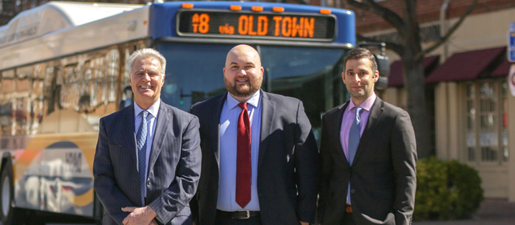
In a collision, vehicle drivers and their passengers are provided a level of protection by being in a car. A pedestrian doesn’t have that same protective barrier. When struck by a car, a pedestrian takes the full force of the impact from the car and then from the street they fall on. That type of accident can result in serious injury and, in extreme cases, a fatality.
According to the more recent report from the Virginia Crime Commission, between 2017 and 2022, 771 pedestrians were killed in accidents. Most of those fatalities happened at or between an intersection. Those pedestrian accident numbers clearly indicate why it is important for everyone to understand and obey the crosswalk laws in Virginia.
Pedestrian and Driver Responsibilities
When you get a driver’s license, you have to pass a written and skills test. The written portion is based on information you’ll find in the driver’s manual provided by the Virginia Department of Motor Vehicles. However, you don’t need to take a test to go for a walk, but you do need to be aware of the laws.
Virginia law states the following regulations for pedestrians:
“When crossing highways, pedestrians shall not carelessly or maliciously interfere with the orderly passage of vehicles. They shall cross, wherever possible, only at intersections or marked crosswalks. Where intersections contain no marked crosswalks, pedestrians shall not be guilty of negligence as a matter of law for crossing at any such intersection or between intersections when crossing by the most direct route.”
Conversely, the law also has the regulations for pedestrians:
“The driver of any vehicle on a highway shall stop when any pedestrian crossing such highway is within the driver’s lane or within an adjacent lane and approaching the driver’s lane until such pedestrian has passed the lane in which the vehicle is stopped:
- At any clearly marked crosswalk, whether at midblock or at the end of any block;
- At any regular pedestrian crossing included in the prolongation of the lateral boundary lines of the adjacent sidewalk at the end of a block; or
- At any intersection when the driver is approaching on a highway where the speed limit is not more than 35 miles per hour.”
Simply put, if a pedestrian is crossing at a designated crosswalk, a driver needs to yield to them. The challenge then becomes making the connection between the pedestrian and the driver. If you’re about to step into a crosswalk, you want to look for an approaching car and make eye contact with the driver so they will know your intention. You shouldn’t assume that you can just step into the crosswalk and the driver will automatically come to a stop. What if they didn’t see you?
Interfering With Traffic
Although a pedestrian has the right to of way at a crosswalk, that doesn’t give them the power to make a crossing anywhere along a street. That clause in the law that says, “shall not carelessly or maliciously interfere with the orderly passage of vehicles,” means you shouldn’t run out between cars. It also means you shouldn’t ride bikes or skateboards or even use remote-controlled cars in a way that would interfere with traffic.
If you are waiting for a bus, you need to stay on the sidewalk. Stepping off and looking down the road for the approaching bus might not allow you to seek a remedy if you happen to get hit by a car.
The right of way only applies on roads with a maximum speed limit of 35 miles per hour or lower. Pedestrians can cross a four-lane highway and expect vehicles to stop.
Additional Safety Tips for Pedestrians
Whether you’re walking in your neighborhood for exercise or taking a stroll on your lunch break, you can put these additional safety tips into action:
Avoid Distractions
If you are listening to music on headphones or earbuds when walking, you should only listen in one ear to make sure you can hear what is happening around you, especially when crossing the street. Additionally, you should avoid looking at your phone when crossing the street. That will prevent you from making that vital eye contact with drivers.
Don’t Rush
Don’t rush out into the crosswalk to make the light or hurry across the street. You need to allow oncoming drivers to see you and come to a stop. Just think about your own reaction time when driving.
Wait for Drivers
Even though you’ve made contact with the driver, and it appears like they are slowing down, wait for them to come to a complete stop before you cross.
Obey Walk/don’t Walk Signals
Your right of way as a pedestrian is not absolute. That means it applies when you have the indication to cross from a walk signal. A “don’t walk” signal means just that.
Getting Legal Assistance for a Pedestrian Injury
If you were injured by a negligent driver while walking, you should speak with the attorneys at Curcio Law. We have a lot of experience helping clients with pedestrian accident claims. We understand the responsibilities of drivers and pedestrians. We know what it takes to reach a successful settlement. If you’ve been involved in this type of accident, we want to hear what happened.

